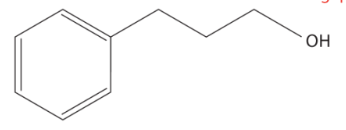Enhanced TDS
Identification & Functionality
- CAS-US
- Chemical Name
- Fragrance Ingredient Class
- INCI Name
- Olfactory Notes
- Tilley Product Number
- Cosmetic Ingredients Functions
- Pharma & Nutraceuticals Functions
- Technologies
- Product Families
- Chemical Structure

Applications & Uses
- Markets
- Applications
- Application Format
- Bath & Shower Applications
- Fragrances & Perfume Applications
Properties
- Physical Form
Regulatory & Compliance
- Certifications & Compliance
- Chemical Inventories
Packaging & Availability
- Packaging Information
200 kg steel drums with baked phenolic resin lining.
Storage & Handling
- Storage and Shelf Life Conditions
- The recommended retest date is 12 months from the date of manufacture.
- If the drum (or tote) has been unopened, properly stored, and the product tested to confirm quality, it may be possible to extend the retest date to a maximum of 24 months from the date of manufacture.
- When storing drums or samples, the product should be "padded" with dry nitrogen or another inert gas. This product should be handled using
- the safe handling practices normally accorded with the handling of organic chemical compounds, including avoidance of contact, adequate ventilation, and cleanliness.
